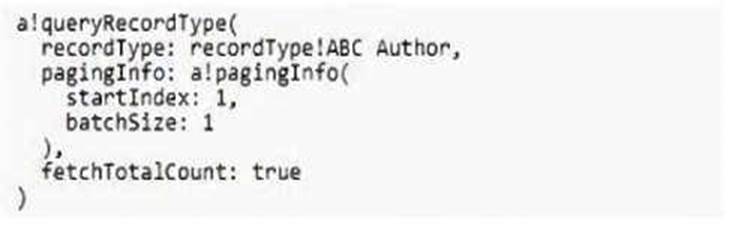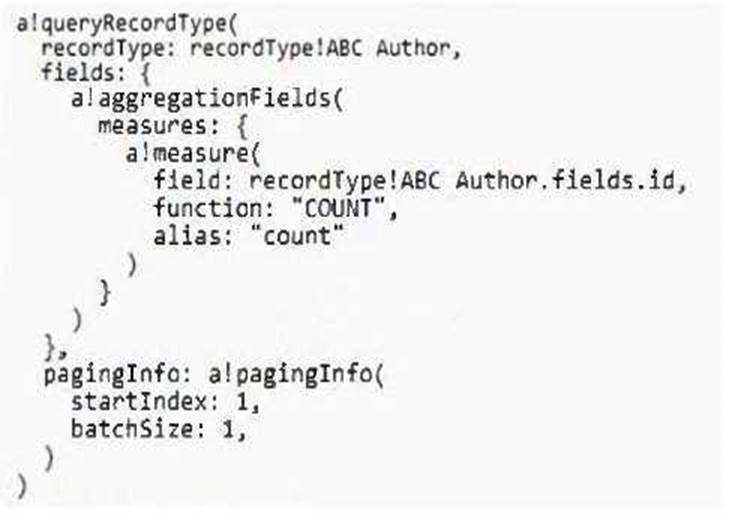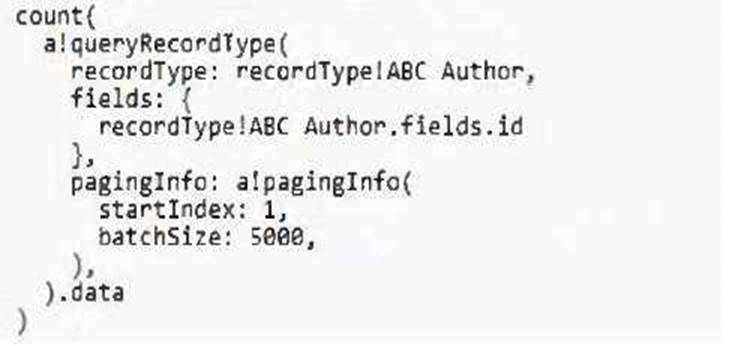Practice Free ACD101 Exam Online Questions
Which Appian feature is used to automate repetitive manual tasks such as extracting data from a system for which there is no API?
- A . RPA
- B . Process Mining
- C . Connected Systems
A
Explanation:
Robotic Process Automation (RPA) is the Appian feature designed to automate repetitive manual
![]()
tasks, especially in scenarios where interacting with systems without APIs is necessary. RPA bots can mimic human actions, such as navigating through system interfaces, extracting data, and entering information, effectively bridging the gap between digital processes and systems that lack API integrations. This capability is particularly useful for integrating legacy systems into modern workflows, streamlining operations that would otherwise require manual intervention. Reference:
Appian Documentation on RPA: Explains how RPA can be leveraged within Appian to automate tasks, providing examples and best practices for implementing RPA bots in business processes.
You need to start a process using an email trigger.
How should you configure this process model using the Process Model Properties dialog?
![]()
- A . Go to File > Properties > Alerts. Configure the Custom Alert settings.
- B . Go to File > Properties Set the proper Process Display Name
- C . Go to File > Properties. Select the Public Events checkbox to allow anyone to fire triggers.
A
Explanation:
To start a process using an email trigger, you need to configure the process model to listen for an email event. This is done by going to File > Properties > Alerts in the process model properties dialog and configuring the Custom Alert settings. Here you can specify the email address that will trigger the process when an email is sent to it.
Reference: Appian Documentation – Configuring Alerts in Process Models
You need to start a process using an email trigger.
How should you configure this process model using the Process Model Properties dialog?
![]()
- A . Go to File > Properties > Alerts. Configure the Custom Alert settings.
- B . Go to File > Properties Set the proper Process Display Name
- C . Go to File > Properties. Select the Public Events checkbox to allow anyone to fire triggers.
A
Explanation:
To start a process using an email trigger, you need to configure the process model to listen for an email event. This is done by going to File > Properties > Alerts in the process model properties dialog and configuring the Custom Alert settings. Here you can specify the email address that will trigger the process when an email is sent to it.
Reference: Appian Documentation – Configuring Alerts in Process Models
Which two groups can be set within Application Properties? (Choose two.)
- A . Administrators Groups
- B . Developers Groups
- C . Users Groups
- D . Designers Groups
A, C
Explanation:
Within Application Properties in Appian, you can set two groups: Administrators Groups and Users Groups. The Administrators Group is responsible for managing and configuring the application, while the Users Group is designated for end-users who interact with the application’s functionalities. Reference:
Appian Documentation: Application Properties
Review the following code snippet:
displayvalue(1, {0, 1, 2}, {"Low", "Medium", "High"}, "Unknown")
The definition of displayvalue is:
Tries to match a value in a given array with a value at the same index in a replacement array and returns either the value at the same index or a default value if the value is not found.
What does this code snippet return?
- A . Low
- B . Medium
- C . High
B
Explanation:
The displayvalue() function matches a given value with an array and returns the value at the same index from a replacement array or a default value if not found. In the snippet displayvalue(1, {0, 1, 2}, {"Low", "Medium", "High"}, "Unknown"), the value 1 is matched in the array {0, 1, 2} at index 1. The function then returns the value at index 1 in the array {"Low", "Medium", "High"}, which is "Medium".
Reference: Appian Expression Language Documentation – Functions
You are configuring a Related Action for an entity-backed record type.
What is the proper domain prefix to reference the record data that will be passed into the Process Model as context for the Record Action?
- A . ac!
- B . pv!
- C . rv!
B
Explanation:
When configuring a Related Action for an entity-backed record type, the proper domain prefix to reference the record data passed into the Process Model as context for the Record Action is pv!. This prefix stands for process variables, which are used to pass data into and out of a process model. In the context of a Related Action, pv! would be used to reference the specific process variables that are configured to receive the record data.
Reference: Appian Documentation – Process Variables and Record Types
Which option best describes the primary purpose of the interface design object?
- A . Provides a method for an Appian application to interact with an external application or service.
- B . Provides a method for end users to interact with an Appian application.
- C . Provides a method for an Appian application to interact with a database.
B
Explanation:
The primary purpose of the interface design object in Appian is to provide a method for end users to
interact with an Appian application. Interfaces are the user-facing components that allow for the
input, display, and manipulation of data within the application, facilitating user engagement and task
completion.
Reference:
Appian Documentation: Interface Design
![]()
You have a record type, ABC_Author, backed by a database table.
You need to retrieve the total number of authors without loading all the data.
According to Appian best practices, which code snippet accomplishes this goal in the most efficient way?
A)

B)
![]()

C)

- A . Option A
- B . Option B
- C . Option C
B
Explanation:
![]()
According to Appian best practices, the most efficient way to retrieve the total number of authors without loading all the data is to use a query that includes an aggregation function. Option B uses an aggregation field with a COUNT function, which is designed to return the number of rows that match a query without the need to retrieve and load all row data, thus optimizing performance.
Reference:
Appian Documentation: a!queryRecordType Function
You configured a Custom Data Type (CDT), ACME_video. You need to set up a node in your process model to write a new video as a row in the CDT’s corresponding database table.
Which set of inputs must you configure on your Write to Data Store smart service node?
- A . The data store and an input corresponding to each field of the ACME_video CDT.
- B . The data store entity and an input of type ACME_video.
- C . The data store and an input of type ACME_video.

B
Explanation:
When configuring a Write to Data Store Entity smart service node to write a new row to a CDT’s corresponding database table, you must specify the data store entity where the CDT is stored. Additionally, you need to provide an input of the type that matches the CDT, in this case, an input of type ACME_video, which will contain the data to be written to the database. Reference: Appian Documentation – Write to Data Store Entity Smart Service
You have two record types: ACME_Student and ACME_Class.
You need to add a many-to-many relationship between these two record types.
What should you do?
- A . Create a new record type with data sync enabled, then add a one-to-many relationship from each record type (ACME_Student and ACME_Class) to the new mapping record type.
- B . This relationship cannot be modeled using record type relationships.
- C . Add the relationship from either ACME_Student or ACME_Class, then select Many-to-Many under Relationship Type, and add the corresponding keys.
A
Explanation:
To establish a many-to-many relationship between two record types in Appian, you should create a junction or mapping record type that will handle the many-to-many association. This new record type should have two one-to-many relationships, one to each of the original record types (ACME_Student and ACME_Class). This setup allows each student to be associated with multiple classes and each class to be associated with multiple students. Reference: Appian Documentation – Record Type Relationships
